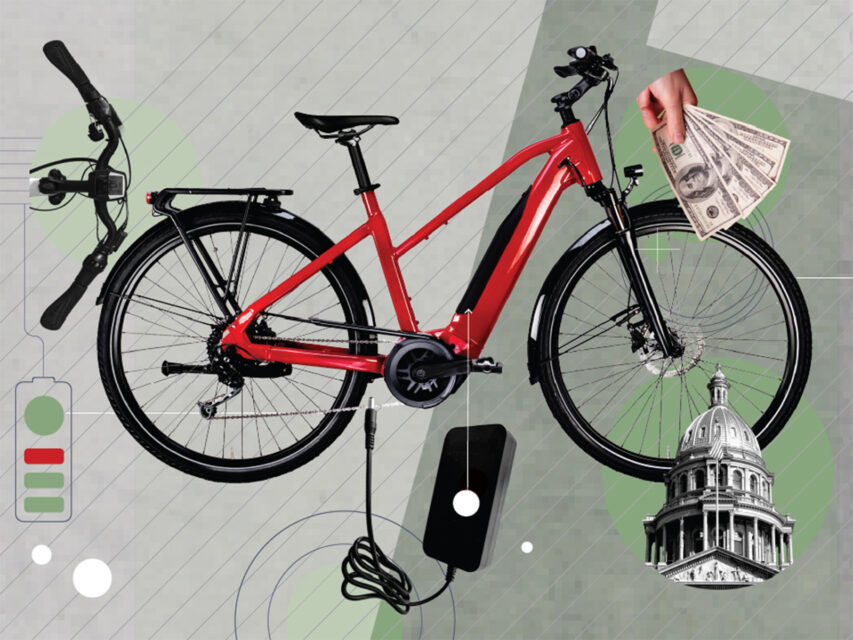The Local newsletter is your free, daily guide to life in Colorado. For locals, by locals.
If it seems like the e-bike fad exploded on area streets and trails in recent years, well, it did—but not by accident. Launched in August 2023, Colorado’s e-bike rebate program reached as high as $1,100 and helped nearly 8,000 residents replace short car trips with two-wheel, battery-powered excursions by April 2024. That’s when the state switched gears to one $450 point-of-sale tax credit, which was good for one bike per person, per year.
But in 2026, that’s getting slashed—along with other green-energy incentives—due to sagging state budget forecasts. Starting January 1, residents will only be eligible for a $225 tax credit. So, if you want to electrify your riding experience and benefit from more of the state’s generosity, consider this the eleventh hour. These four tips from local experts will help you find the right steed for your needs.
1. Know how you plan to use the e-bike.
“Be like the Spice Girls. Know what you want—what you really, really want,” says Mark Bendele, an avid e-biker and sales manager at eBikes USA in Valverde. Understanding how you’re going to use the bike is essential: If you’re going to haul kids, for example, you’ll want to ask about a long, comfortable back bench. Commuters should prioritize weight, especially if you’ll be carrying your rig up stairs, while more recreational gravel riders should look for longer-range batteries and durable tires.
In Denver, Class 1 and 2 e-bikes are permitted on most bike paths. For both, the electric assistance cuts out once you top 20 mph; the latter includes a throttle.
2. Take a test ride before you buy an e-bike.
“If you’re a first-time buyer, sizing is really important. Most shops do in-person test rides, so take advantage of those,” says Selene Perez, a Denver-based e-bike influencer better known as Electrified Latina on YouTube. It’s not just about fit, but also feel. (The pedal assist on bikes with cadence sensors might feel jerky, for example, while those with torque sensors will feel more natural.)
Plus, wheel sizes vary, as do frame shapes and handlebars. Trying out various saddles is essential to finding your perfect long-term ride.
3. Don’t overspend on an e-bike.
To a degree, more expensive e-bikes are better made, but Bendele says the sweet spot for price and quality at eBikes USA is between $1,700 and $3,000. Although you may be able to find a new e-bike at some retailers for less than $1,000, you’ll need to do careful research to make sure it’s a sturdy machine. “If you think you’re going to get a unicorn bike for $999, you’re going to be very unhappy,” he says. “But if you just want a commuter, you don’t need to spend $7,000.”
4. Shop Local
Yes, you can purchase an e-bike online and still get your Colorado tax credit, but many local stores offer better warranties and will kick in a free tune-up or discounted labor for ongoing maintenance. (Plus, e-bike startups that seem too good to be true probably are—and might be out of business when you need a replacement part.)
Lots of traditional bike shops now carry electric models, too. For showrooms dedicated to battery-powered rides, check out Berkeley’s eForce Electric Bikes, Elevated E-Bikes in Arvada, or FuturE-Bikes in Broomfield, in addition to eBikes USA.
Can you combine the Colorado e-bike tax credit with Denver’s e-bike rebate program?
Yes! The Colorado e-bike tax credit will be applied to the e-bike purchase, along with your Denver voucher. Together, they can only cover 80 percent of the purchase price of an e-bike.









